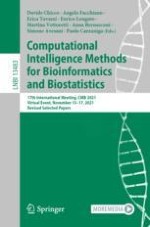2022 | OriginalPaper | Buchkapitel
Machine Learning Classifiers Based on Dimensionality Reduction Techniques for the Early Diagnosis of Alzheimer’s Disease Using Magnetic Resonance Imaging and Positron Emission Tomography Brain Data
verfasst von : Lilia Lazli
Erschienen in: Computational Intelligence Methods for Bioinformatics and Biostatistics
Aktivieren Sie unsere intelligente Suche, um passende Fachinhalte oder Patente zu finden.
Wählen Sie Textabschnitte aus um mit Künstlicher Intelligenz passenden Patente zu finden. powered by
Markieren Sie Textabschnitte, um KI-gestützt weitere passende Inhalte zu finden. powered by
